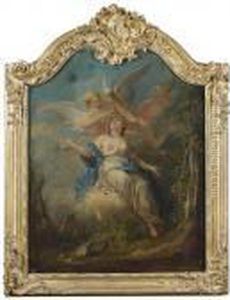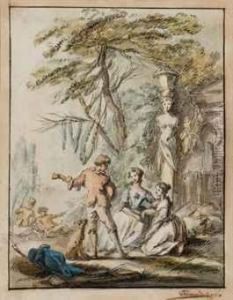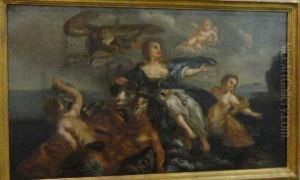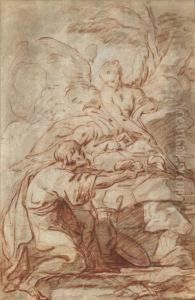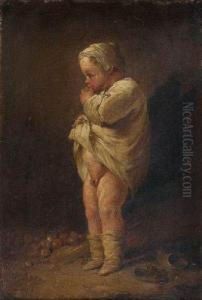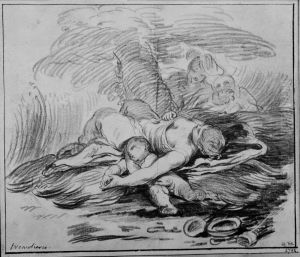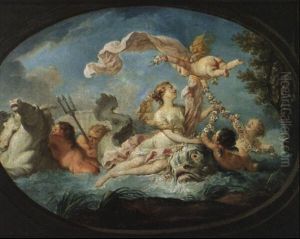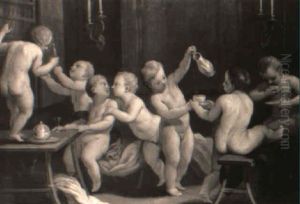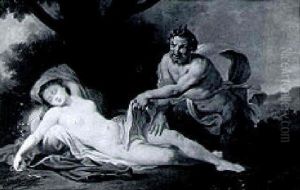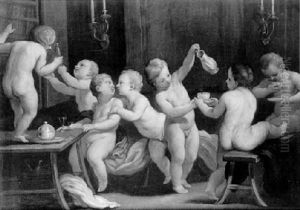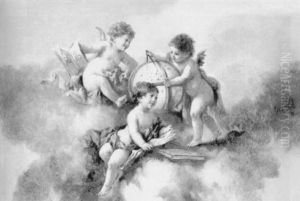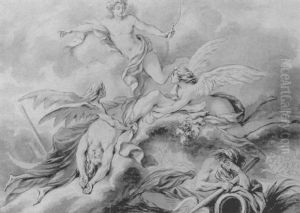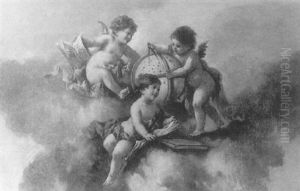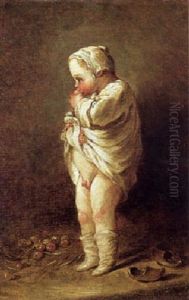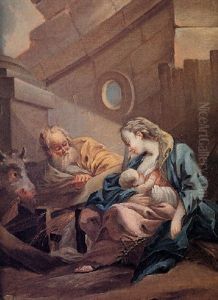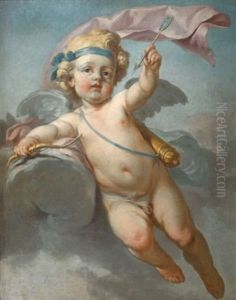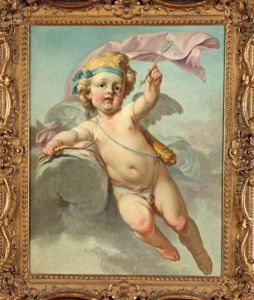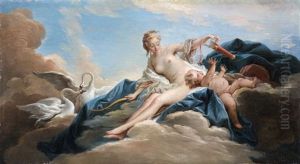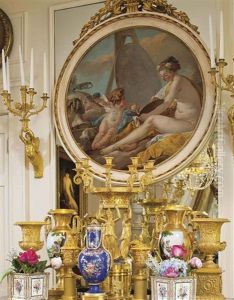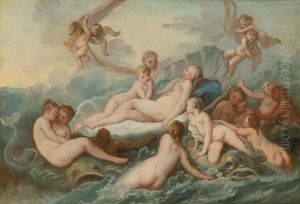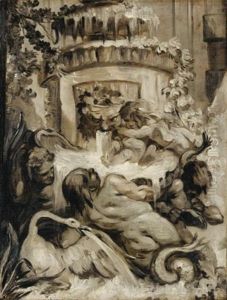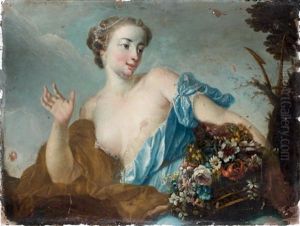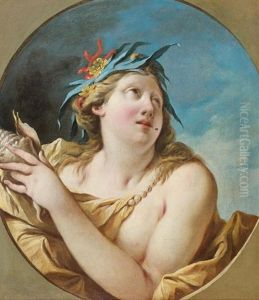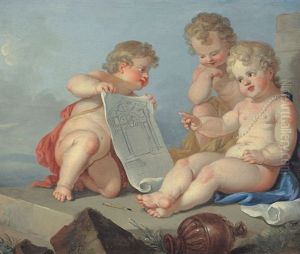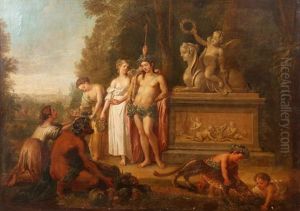Pierre Charles Tremolieres Paintings
Pierre Charles Trémolières was a French painter, born in 1703 in Cholet, France, and passed away in 1739 in Paris. Not as widely known as some of his contemporaries, Trémolières still played a noteworthy role in the Rococo movement, which was characterized by its lightness, elegance, and use of delicate colors. His contributions to art during the early 18th century, particularly in the realm of mythological and pastoral themes, reflect the Rococo's departure from the grandeur and seriousness of the Baroque era that preceded it.
Trémolières' early life is not extensively documented, but it is known that he was active in Paris and possibly received his training there. The artistic environment of Paris during this period was vibrant and innovative, offering Trémolières a fertile ground for developing his unique style. He became known for his skillful handling of color and light, as well as his ability to convey softness and intimacy in his subjects, qualities that were highly prized in the Rococo era.
Throughout his career, Trémolières received several commissions for religious and mythological scenes. His work was characterized by a delicate touch and a preference for themes that evoked a sense of pastoral tranquility or gentle romance. Despite his talent, his career was relatively short-lived; Trémolières died at the young age of 36 in Paris. Nevertheless, his artworks left a lasting impression on the French art scene of the 18th century.
Trémolières' legacy is preserved in various collections and museums across France, where his paintings continue to be admired for their beauty and historical value. Although his name may not echo as loudly as those of his peers, his contributions to the Rococo movement remain significant, embodying the era's aesthetic ideals and its shift towards lighter, more whimsical artistic expressions.
